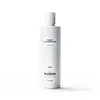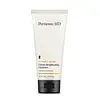What's inside
What's inside
 Key Ingredients
Key Ingredients

 Benefits
Benefits

 Concerns
Concerns

 Ingredients Side-by-side
Ingredients Side-by-side

Water
Skin ConditioningAmmonium Lauryl Sulfate
CleansingAmmonium Laureth Sulfate
CleansingPEG-120 Methyl Glucose Dioleate
EmulsifyingAmmonium Xylenesulfonate
Glycerin
HumectantButylene Glycol
HumectantHydrolyzed Wheat Protein
Skin ConditioningQuillaja Saponaria Bark Extract
CleansingSaponaria Officinalis Root Extract
Skin ConditioningYucca Schidigera Root Extract
Skin ConditioningCocamidopropyl Betaine
CleansingAscorbyl Palmitate
AntioxidantPolysorbate 20
EmulsifyingDimethyl Lauramine Oleate
Skin ConditioningPolyquaternium-10
Dimethyl Mea
BufferingCitric Acid
BufferingParfum
MaskingBenzyl Benzoate
AntimicrobialLimonene
PerfumingLauryl Alcohol
EmollientAmmonium Sulfate
Caprylyl Glycol
EmollientEthylhexylglycerin
Skin ConditioningHexylene Glycol
EmulsifyingOleic Acid
EmollientSodium Acetate
BufferingSodium Chloride
MaskingSodium Glycolate
BufferingDimethylaminopropylamine
Isopropyl Alcohol
SolventSodium Metabisulfite
AntioxidantSodium Sulfite
PreservativeDisodium EDTA
Tetrasodium EDTA
Potassium Sorbate
PreservativeSodium Benzoate
MaskingPhenoxyethanol
PreservativeBenzyl Alcohol
PerfumingWater, Ammonium Lauryl Sulfate, Ammonium Laureth Sulfate, PEG-120 Methyl Glucose Dioleate, Ammonium Xylenesulfonate, Glycerin, Butylene Glycol, Hydrolyzed Wheat Protein, Quillaja Saponaria Bark Extract, Saponaria Officinalis Root Extract, Yucca Schidigera Root Extract, Cocamidopropyl Betaine, Ascorbyl Palmitate, Polysorbate 20, Dimethyl Lauramine Oleate, Polyquaternium-10, Dimethyl Mea, Citric Acid, Parfum, Benzyl Benzoate, Limonene, Lauryl Alcohol, Ammonium Sulfate, Caprylyl Glycol, Ethylhexylglycerin, Hexylene Glycol, Oleic Acid, Sodium Acetate, Sodium Chloride, Sodium Glycolate, Dimethylaminopropylamine, Isopropyl Alcohol, Sodium Metabisulfite, Sodium Sulfite, Disodium EDTA, Tetrasodium EDTA, Potassium Sorbate, Sodium Benzoate, Phenoxyethanol, Benzyl Alcohol
Water
Skin ConditioningSodium Laureth Sulfate
CleansingCocamidopropyl Betaine
CleansingDecyl Glucoside
CleansingPPG-2 Hydroxyethyl Coco/Isostearamide
Sodium Chloride
MaskingDimethyl Mea
BufferingAscorbyl Palmitate
AntioxidantSodium Benzoate
MaskingEthylhexylglycerin
Skin ConditioningMagnesium Aspartate
Skin ConditioningZinc Gluconate
Skin ConditioningCopper Gluconate
Skin ConditioningDisodium EDTA
Citric Acid
BufferingTetrasodium EDTA
Phenoxyethanol
PreservativeParfum
MaskingWater, Sodium Laureth Sulfate, Cocamidopropyl Betaine, Decyl Glucoside, PPG-2 Hydroxyethyl Coco/Isostearamide, Sodium Chloride, Dimethyl Mea, Ascorbyl Palmitate, Sodium Benzoate, Ethylhexylglycerin, Magnesium Aspartate, Zinc Gluconate, Copper Gluconate, Disodium EDTA, Citric Acid, Tetrasodium EDTA, Phenoxyethanol, Parfum
Ingredients Explained
These ingredients are found in both products.
Ingredients higher up in an ingredient list are typically present in a larger amount.
Ascorbyl Palmitate is created by combining pure Vitamin C and palmitic acid. It is an antioxidant and helps reduce hyperpigmentation.
This ingredient is a more stable version of Vitamin C, meaning it does not disintegrate as quickly when exposed to sunlight. However, studies show it does not penetrate skin as well as pure Vitamin C.
Ascorbyl Palmitate is oil soluble.
Read more about other types of Vitamin C:
Learn more about Ascorbyl PalmitateCitric Acid is an alpha hydroxy acid (AHA) naturally found in citrus fruits like oranges, lemons, and limes.
Like other AHAs, citric acid can exfoliate skin by breaking down the bonds that hold dead skin cells together. This helps reveal smoother and brighter skin underneath.
However, this exfoliating effect only happens at high concentrations (20%) which can be hard to find in cosmetic products.
Due to this, citric acid is usually included in small amounts as a pH adjuster. This helps keep products slightly more acidic and compatible with skin's natural pH.
In skincare formulas, citric acid can:
While it can provide some skin benefits, research shows lactic acid and glycolic acid are generally more effective and less irritating exfoliants.
Most citric acid used in skincare today is made by fermenting sugars (usually from molasses). This synthetic version is identical to the natural citrus form but easier to stabilize and use in formulations.
Read more about some other popular AHA's here:
Learn more about Citric AcidCocamidopropyl Betaine is a fatty acid created by mixing similar compounds in coconut oil and dimethylaminopropylamine, a compound with two amino groups.
This ingredient is a surfactant and cleanser. It helps gather the dirt, pollutants, and other impurities in your skin to be washed away. It also helps thicken a product and make the texture more creamy.
Being created from coconut oil means Cocamidopropyl Betaine is hydrating for the skin.
While Cocamidopropyl Betaine was believed to be an allergen, a study from 2012 disproved this. It found two compounds in unpure Cocamidopropyl Betaine to be the irritants: aminoamide and 3-dimethylaminopropylamine. High-grade and pure Cocamidopropyl Betaine did not induce allergic reactions during this study.
Learn more about Cocamidopropyl BetaineWe don't have a description for Dimethyl Mea yet.
Disodium EDTA plays a role in making products more stable by aiding other preservatives.
It is a chelating agent, meaning it neutralizes metal ions that may be found in a product.
Disodium EDTA is a salt of edetic acid and is found to be safe in cosmetic ingredients.
Learn more about Disodium EDTAEthylhexylglycerin (we can't pronounce this either) is commonly used as a preservative and skin softener. It is derived from glyceryl.
You might see Ethylhexylglycerin often paired with other preservatives such as phenoxyethanol. Ethylhexylglycerin has been found to increase the effectiveness of these other preservatives.
Parfum is a catch-all term for an ingredient or more that is used to give a scent to products.
Also called "fragrance", this ingredient can be a blend of hundreds of chemicals or plant oils. This means every product with "fragrance" or "parfum" in the ingredients list is a different mixture.
For instance, Habanolide is a proprietary trade name for a specific aroma chemical. When used as a fragrance ingredient in cosmetics, most aroma chemicals fall under the broad labeling category of “FRAGRANCE” or “PARFUM” according to EU and US regulations.
The term 'parfum' or 'fragrance' is not regulated in many countries. In many cases, it is up to the brand to define this term.
For instance, many brands choose to label themselves as "fragrance-free" because they are not using synthetic fragrances. However, their products may still contain ingredients such as essential oils that are considered a fragrance by INCI standards.
One example is Calendula flower extract. Calendula is an essential oil that still imparts a scent or 'fragrance'.
Depending on the blend, the ingredients in the mixture can cause allergies and sensitivities on the skin. Some ingredients that are known EU allergens include linalool and citronellol.
Parfum can also be used to mask or cover an unpleasant scent.
The bottom line is: not all fragrances/parfum/ingredients are created equally. If you are worried about fragrances, we recommend taking a closer look at an ingredient. And of course, we always recommend speaking with a professional.
Learn more about ParfumPhenoxyethanol is a preservative that has germicide, antimicrobial, and aromatic properties. Studies show that phenoxyethanol can prevent microbial growth. By itself, it has a scent that is similar to that of a rose.
It's often used in formulations along with Caprylyl Glycol to preserve the shelf life of products.
Sodium Benzoate is a preservative. It's used in both cosmetic and food products to inhibit the growth of mold and bacteria. It is typically produced synthetically.
Both the US FDA and EU Health Committee have approved the use of sodium benzoate. In the US, levels of 0.1% (of the total product) are allowed.
Sodium benzoate works as a preservative by inhibiting the growth of bacteria inside of cells. It prevents the cell from fermenting a type of sugar using an enzyme called phosphofructokinase.
It is the salt of benzoic acid. Foods containing sodium benzoate include soda, salad dressings, condiments, fruit juices, wines, and snack foods.
Studies for using ascorbic acid and sodium benzoate in cosmetics are lacking, especially in skincare routines with multiple steps.
We always recommend speaking with a professional, such as a dermatologist, if you have any concerns.
Learn more about Sodium BenzoateChances are, you eat sodium chloride every day. Sodium Chloride is also known as table salt.
This ingredient has many purposes in skincare: thickener, emulsifier, and exfoliator.
You'll most likely find this ingredient in cleansers where it is used to create a gel-like texture. As an emulsifier, it also prevents ingredients from separating.
There is much debate on whether this ingredient is comedogenic. The short answer - comedogenic ratings don't tell the whole story. Learn more about comegodenic ratings here.
The concensus about this ingredient causing acne seems to be divided. Research is needed to understand if this ingredient does cause acne.
Scrubs may use salt as the primary exfoliating ingredient.
Learn more about Sodium ChlorideTetrasodium EDTA is the salt formed from neutralizing ethylenediamine tetraacetic acid with sodium hydroxide. It is a chelating agent and used to prevent metal ions from binding to other ingredients. This helps keep the product and ingredients stable.
Tetrasodium EDTA comes as a white solid and is soluble in water.
Water. It's the most common cosmetic ingredient of all. You'll usually see it at the top of ingredient lists, meaning that it makes up the largest part of the product.
So why is it so popular? Water most often acts as a solvent - this means that it helps dissolve other ingredients into the formulation.
You'll also recognize water as that liquid we all need to stay alive. If you see this, drink a glass of water. Stay hydrated!
Learn more about Water